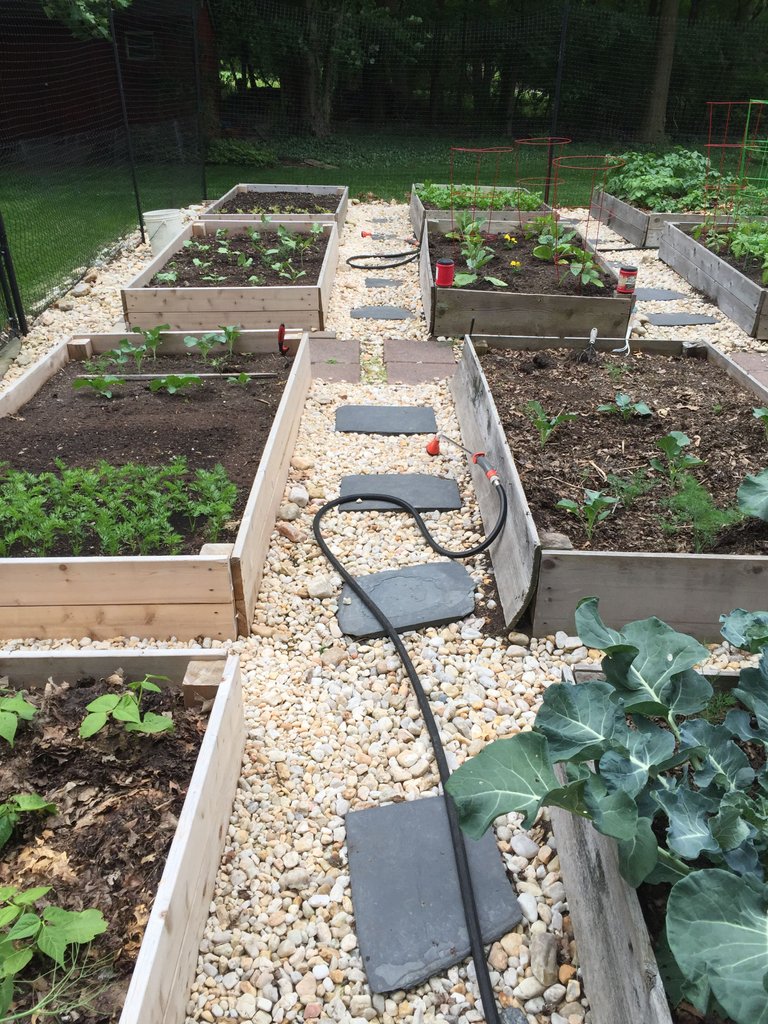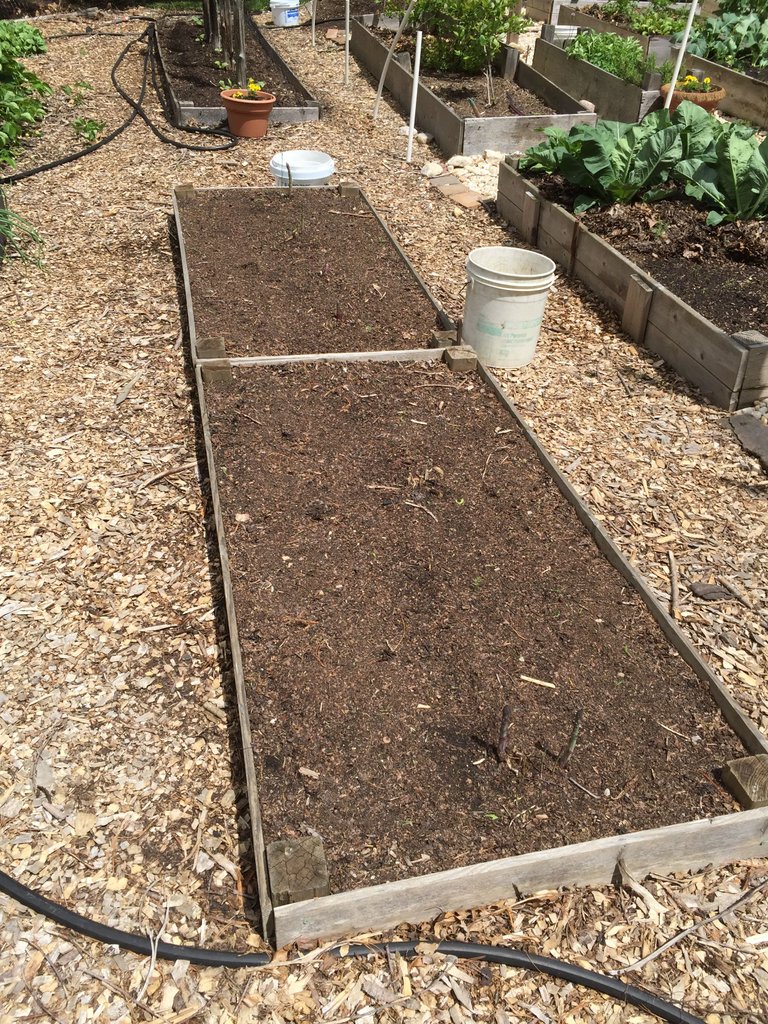Weeding can be a big chore especially in large gardens so doing some work up front makes your life easier in the long run. I have two areas I focus on in my raised bed garden: 1) between my beds; and 2) inside my beds.
Between my beds I decided to use stone for most of my garden but elected to use wood chips in a section as well. I chose stone because it is permanent and needs little attention once the garden is established. Wood chips should be put down every year or two to keep weeds down. I decided on the wood chips in a section because I wanted a work area I wouldn’t need to be so careful with if I wanted to dump a pile of mushroom soil in the spring to be used throughout the growing season.
Inside my beds I use leaf mold to mulch around my plants from leaves that I collected the prior autumn. I stockpile them behind my shed and then try to find matted down damp clumps for easy spreading around my plants. Avoid the drier leaves if possible since they have the tendency to blow around. Not only does this keep weeds down but it protects the roots in the hot summer months by keeping the soil damp. It also encourages beneficial insects and earthworms and eventually can be worked into your beds to provide organic matter for the following year.
The easiest way to build a raised bed garden from scratch is to cut the grass as close to the soil as possible first - using a weed wacker works best. If you choose wood chips as your ground cover, spread old newspaper down first and then place your boxes in your desired locations. Fill your boxes with rich loamy soil and spread your wood chips around your boxes and you are ready to go. If you use stone between your beds put down landscaping fabric first and then spread your stone. This will prevent weeds and stop the stones from sinking into the earth over time. For stone gardens I recommend medium sized stones (1”) first to keep everything in place during heavy rains and then smaller stones on top to cement everything in place and make it easy to walk on.
You can decide how spread-out you want your garden to be but I recommend at least a couple of feet between beds in order to fit a wheel barrel between them. Try to get the boxes as level as possible and then put your stone or wood chips down so the bottom 2” of the box is covered on the outside by the stone or wood. This way the soil doesn’t run out the bottom of the box. And no need to anchor the boxes into the ground in any way – they aren’t going anywhere. I suggested woodchips and stone in this post but straw and planks can be used or anything that works for you. Let me know if you have any other good ideas. Good luck.




I just think weeding is going to be something that you can never end. It's just part of gardening. When my harvest is coming in and we are canning and putting food up, I don't worry about it anymore. But right now in the spring and early summer...I'M ALL OVER IT! LOL Great article and will resteem and follow! Check out our page too!
Hey just noticed I never thanked you on this resteem. I was very confused when I first joined and didn't know what I was doing. Anyway thanks and also for all your great videos and blogs.
No problem! Keep posting! :)
Working on beets and peas for next week....
I haven't been able to get peas to grow good here. Can't wait to see.
I am planning to create some raised beds in the very near future and found your post very informative. How many raised beds do you need to be self sufficient, and what dimensions?
I guess that depends on how many mouths to feed lol. I don't can/freeze much because it always seems to take away a lot of the taste but I do freeze bags of plum tomatoes for making sauce throughout the year and also peppers to be used for cooking. I have 25-30 beds and we (3) eat as much as possible during the season and I give a lot away to neighbors/friends. I'm thinking about maybe selling some at the local flea market this summer to pay for my fertilizer, etc. I would not make a box larger than 4x8 feet or it will probably start bowing on you.
Great information. thanks for sharing.
Ausome. , Looking great
When you finished there you can come make a start on my garden... :-)
Ha ha! My back can barely handle my garden.
Nice info thanks to share.
Welcome to Steemit.
It would be great to see an #introduceyourself post.
https://steemit.com/created/introduceyourself
I did give a brief introduction to my gardening history:
https://steemit.com/gardening/@garden-to-eat/introduction-to-vegetable-gardening
I'll consider creating another. New to all this.
upvote and rs for you...
Thanks!
Great pics of your garden area. It's really nice to see how others are approaching their gardening challenges. I currently use Cedar mulch for my pathways because it breaks down slowly, critters don't like Cedar and it's an abundant local resource. I'll be resteeming this as well! Nice work.
Thanks. Cedar is good wood. That's what my boxes are made of but never thought about looking into using it for woodchips. I'll have to check it out.
Nice garden. Raised beds are the best way to go for sure.
Thanks. Yep a little extra work up front but worth it.